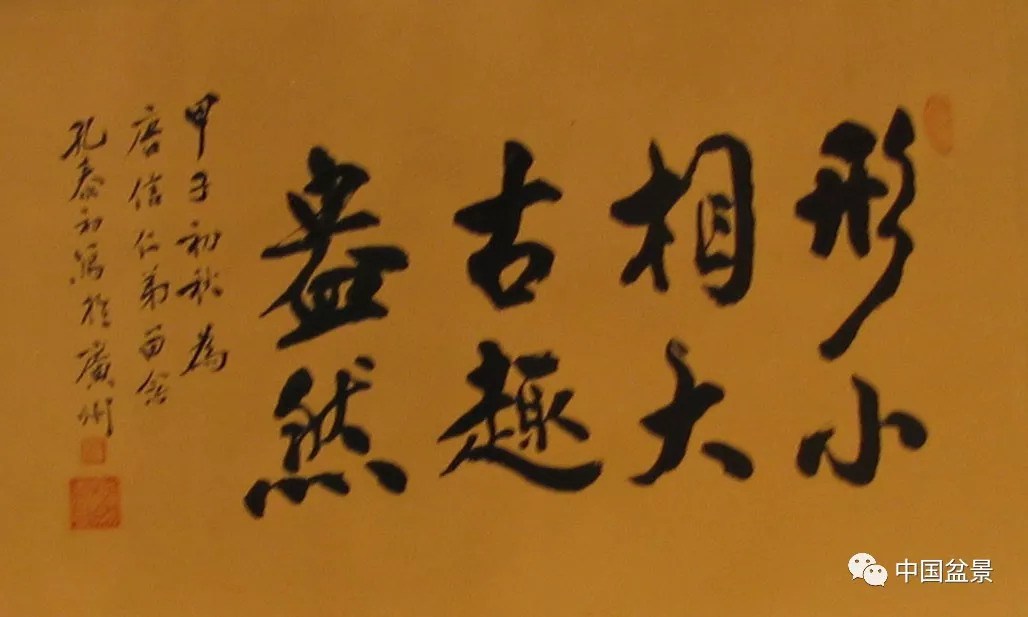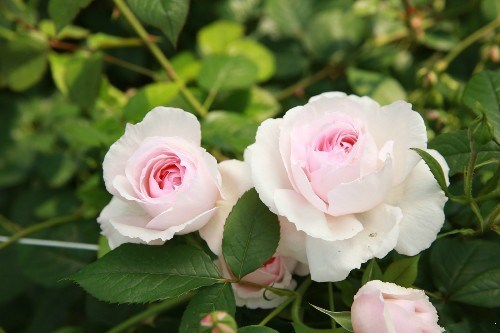Recalling the 20 years of learning from Kong Taichu

Birthday banquet at Panxi Restaurant in Guangzhou in 1976. The first on the left is Guan Yao, the first on the right is Kong Taichu, the second on the left is he Ji, the third on the left is Tang Xin, and the blank direction is Liu Zhongming.
I was originally a financial officer of Wanchang teahouse in Xiguan, Guangzhou. After a public-private partnership, I was transferred to work as an accountant in the catering industry in Liwan West Village. In the 1960s, I worked in the Xinguanhua teahouse at the end of Xihua Road. I began to enjoy bonsai cultivation in my spare time at the age of 40 (1961). Two years later, I met Kong Taichu, a Lingnan bonsai master who worked in Liuhua Xiyuan at that time. In the following 20 years, I learned the art of bonsai cultivation from teacher Kong. I especially recall the impression left by teacher Kong's words and deeds in the past 20 years of teacher-apprentice communication.
Teacher Kong was originally the heir to tea house Zuye, Shengmaotai, Qiaolan Road, Xiguan, Guangzhou. Born in 1903. When he was young, he loved the art of calligraphy and painting. at that time, the "Shu Tsai Tou" (bonsai stump) market was formed along Pao Lan Road, and teacher Kong naturally combined his hobby of calligraphy and painting with the pursuit of bonsai art. At home, he has more than a hundred potted bonsai plants, including nine fragrant plants, sour taste, elm, tea and so on. He first drew the ideal tree shape and pasted it on the hall, then compared with the tree shape in the painting, and cut the stump in the basin. He once said to me, "if you want to play well with bonsai, first, you should go deep into nature to see the tree shape, and second, you should look more at the tree shape of the ancient painting collection." To understand its artistic conception and learn its techniques is to "store branches and cut off dry". A successful bonsai, through artistic modeling and technical pruning, seems to transplant a thousand-year-old tree into a ruler basin with the technique of "shrinking the dragon into an inch". This is the special feature of Lingnan bonsai art. The aesthetic feeling of the tree is based on the principle of "the front does not cover the back, the top does not cover the bottom" and the overall sense of movement. During the period of the Republic of China, not many people really played with tree heads in Guangzhou, and there were only about 20 or 30 people in the city. These enthusiasts are mainly doctors, businessmen, university professors and so on. At that time, bonsai players did not make a living by selling bonsai, but only for artistic appreciation and exchange.
After the liberation of Guangzhou, the people's government attached great importance to the development of bonsai cultivation art. In the 1950s, the bonsai exhibition was held for the first time in Guangzhou Cultural Park. Due to the poor equipment of the pavilion, Mr. Kong also had to borrow tea box mats from his own Sheng Maotai tea house to put the exhibits. The exhibition introduced city leaders to Mr. Kong, who has a high artistic level. A city leader wanted to set up a bonsai cultivation base in Yuexuan in Yuexiu Mountain, mobilizing teacher Kong to move all his bonsai there and become a full-time master gardener who devoted himself to cultivating bonsai. Teacher Kong readily agreed to selflessly offer bonsai and take up his post. In the early 1960s, Guangzhou held its second art bonsai exhibition here. More people participated in the exhibition than when it was the first time. The exhibition will be awarded the first, second, third and fourth prizes. The work is also included in the integrated book and selected into the book Guangzhou Bonsai published by Guangzhou Bonsai Art Research Association in January 1961. Teacher Kong's seven pots of works were awarded the first prize. In addition, the works of Su Ren, Su Qiao, Mo Min Fu, he Gongxia, Li Kang, Chen Tiepu, Zhou Xingfu, Li Chuan, Zhang Ruitu and others were awarded the first prize and included in the book. Among them, teacher Kong's "Spring after Spring. Finch Plum" bonsai was also transferred to Beijing and presented to the visiting foreign guest Emperor Selassie of Ethiopia at the suggestion of Premier Zhou. The art bonsai cultivation base was later transferred from Yuexiu Mountain to Liuhua Xiyuan.
Mr. Kong never criticizes other people's bonsai publicly. But for those who come to sincerely ask for advice, Mr. Kong will sincerely give artistic advice. For example, Liu Zhongming once held the bonsai to teacher Kong's home and trimmed it under the guidance of teacher Kong.
Over the years, I have learned that teacher Kong first extracted from nature and ancient paintings to form a group of tree-shaped artistic images, and then used artistic images to guide the cultivation of artistic bonsai, which has also been improved to a certain extent. I have spent 10 years looking at ancient paintings, including those in the Imperial Palace, and compiled them into "selected trees of famous paintings of past dynasties". In the 1980s, I communicated with Mr. Zhou Guang, a horticulturist in Hong Kong, and he appreciated my collection of ancient paintings. I also traveled to Hainan in the 1960s and 1970s, looking at tree shapes and digging tree stumps. In Jiaji Town, Qionghai, Hainan, an old friend took me to see and dig. There are also driver friends from Nanhai Farm on Hainan Island. When they come to Guangzhou, they will certainly bring more than a dozen plants of Jiuli incense to my house to visit me. I have a special fondness for the cultivation of Jiuli incense. My family once planted 70 or 80 pots of Jiuli incense, and I also wrote an article on the experience of "how to plant Jiuli incense" with more than 10,000 words. In April 1987, my pot entitled "Old trees are merciful to me." the Jiuli incense bonsai was sent to Beijing to participate in the first China Flower Expo and won the "Bonsai Award". In the 1980s, I served as the Executive Deputy Secretary-General of Guangdong Lingnan Bonsai Research Association. Together with Liu Zhongming, Lu Zhiwei and other horticulturists, I served as a teacher in the bonsai art training class of the Provincial Bonsai Association. In the 1990s, I published some articles about the art of bonsai in Guangzhou in overseas newspapers. For example, in the Sing Tao Daily, he published articles such as "introduction to Lingnan Bonsai Art" and "the Origin of Lingnan Bonsai Art and the two famous artists of Lingnan". One is Mr. Kong, and the other is Chen Suren of Haizhu Temple in Guangzhou (who died in 1962).
Bonsai gardening edifies sentiment and also creates the longevity of horticulturists. Mr. Kong died at the age of 82. On the first anniversary of Mr. Kong's death, I wrote two mourning poems:
One is: "the Mongolian teacher has taught me merit for 20 years, but I am ashamed that mediocrity has failed to learn." The cold-eyed side door is popular, and Kesheng's legacy teaches Kong Weng. " The last two sentences of this poem actually involve me asking teacher Kong for advice on a question. In the early 1980s, art bonsai developed more rapidly in the social environment of recovery in various industries. However, individuals from the Municipal Bonsai Association are overheated and regard making money higher than art, openly claiming that "if you can't make money in two or three years, don't plant trees." Lingnan bonsai art is out of date and so on. That's what I said. I asked Mr. Kong for advice. Teacher Kong replied, "they are businessmen, not bonsai players." Don't pay any attention to him. " Teacher Kong's words not only adhere to the Lingnan bonsai art road of a real horticulturist, but also allow others to take the bonsai road to wealth with a broad mind. However, this hot-headed man was later sentenced for extorting ancient pots and tree stumps by using his power, which became an after-dinner joke for people in bonsai circles. On the other hand, the Lingnan bonsai art in Guangzhou continues to develop healthily.
The other is: "both fame and wealth are empty, and life is indifferent to envy Tao Gong." (Tao Gong, refers to Tao Yuanming) pleasant bonsai is better than the mind, willing to turn the small skills into the spring breeze. " Commemorate the elegance of teacher Kong's life with a poem, but also express his ambition.
87-year-old Guan old man in Lingnan, dictated by Tang Xin
Hu Wenzhong's record arrangement
7 December 2007
Wonderful playback:
Welcome to Chinese bonsai!
Bonsai exhibition hall that can be enjoyed at any time
Carry forward bonsai culture and exchange bonsai skills!
Enjoy bonsai art and share a happy life!
- Prev

How to treat chest pain in Pulmonary Hypertension with traditional Chinese Medicine
There are more and more causes and types of pulmonary hypertension in western medicine, and there are nearly 100 kinds of them, which can be said to be dazzling, dazzling and confusing. On the other hand, traditional Chinese medicine can be summarized in eight characters, that is, "depression of atmosphere, deficiency of qi and blood stasis". Medium.
- Next

This flower is beautiful, full of fragrance, pleasant flowering, large amount of flowers, heat resistance, cold resistance and good maintenance.
Wedgwood is a shrub rose cultivated by Austin Company in 2009. Perfect cup-shaped flowers, soft rose pink, delicate and plump petals, very soft and tender. Fast growth speed, plant height up to 1.3m, irrigation...
Related
- Wuhan Hospital Iron Tree Blooming Result Was Instantly Frightened by the Gardener Master
- Which variety of camellia is the most fragrant and best? Which one do you like best?
- What is the small blue coat, the breeding methods and matters needing attention of the succulent plant
- Dormancy time and maintenance management of succulent plants during dormancy
- Minas succulent how to raise, Minas succulent plant pictures
- What are the varieties of winter succulent plants
- How to raise succulent plants in twelve rolls? let's take a look at some experience of breeding twelve rolls.
- Attention should be paid to water control for succulent plants during dormant period (winter and summer)
- Watering experience of twelve rolls of succulent plants
- Techniques for fertilizing succulent plants. An article will let you know how to fertilize succulent plants.

